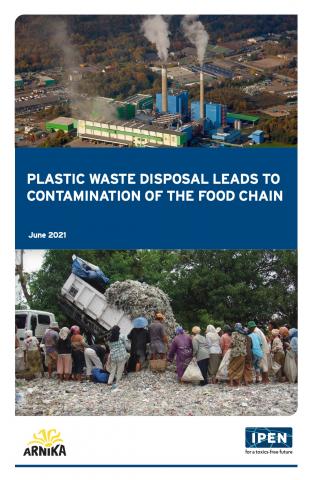Plastic waste disposal leads to contamination of the food chain

Waste generated from the use of plastics is a challenge for the whole of human society. Plastics are everywhere around us, and we can find tiny parts of plastics in even the most pristine places. Most plastics were invented by chemical scientists, and in order to make the plastic suitable for many different uses or to make them meet legislative requirements for fire safety, for example, they need chemical additives that make the plastic resistant, flexible, durable or less flammable. Many of these additives have not only been found to be toxic in themselves, but also lead to the creation of new chemicals, like brominated and chlorinated dioxins, when burned. These new chemicals can be even more toxic than the original additives.
The focus of this study has been on very toxic persistent organic pollutants (POPs) entering the food chain at locations where plastic waste is being recycled, burned, incinerated or dumped. Samples of free-range chicken eggs were analyzed for brominated and chlorinated dioxins (PBDD/Fs and PCDD/Fs), dioxin-like PCBs (dl-PCBs), BFRs, SCCPs, and PFASs. Free-range chicken eggs are sensitive indicators of POP contamination in soils/dust and represent an important human exposure pathway. As “active samplers” they can be used to reveal POPs contamination, particularly in areas impacted by dioxins (PCDD/Fs) and PCBs as well as by BFRs. Thirty-five pooled and one individual free-range eggs from twenty-five different locations worldwide were analyzed for selected POPs in accredited laboratories.
| Attachment | Size |
|---|---|
| 11.47 MB |
